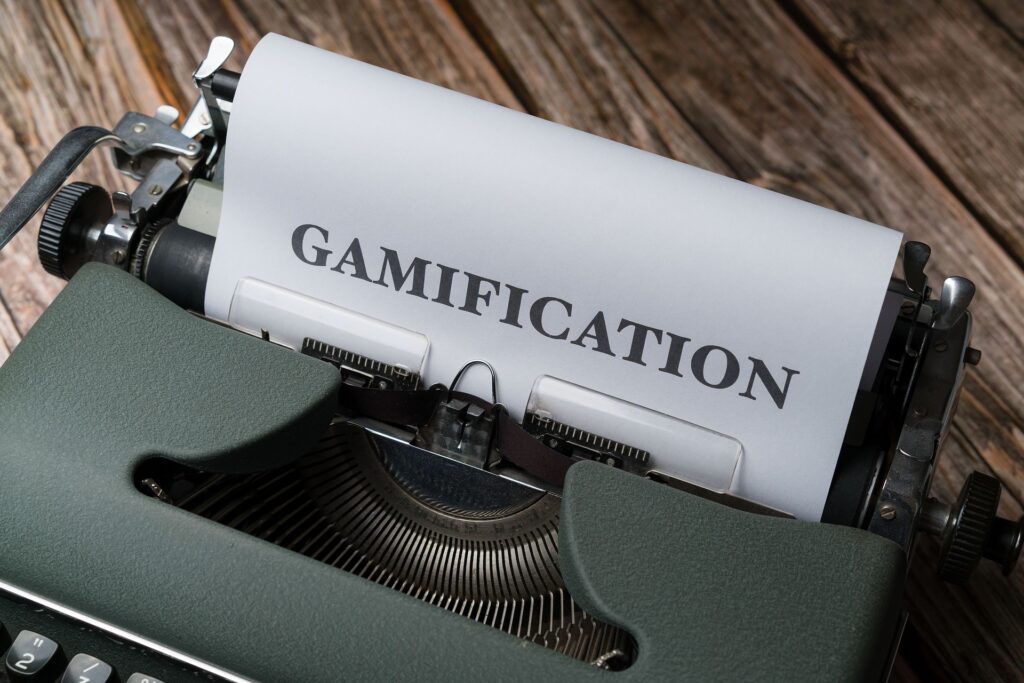Introduction
The measurement of brand awareness can be done using various methods, including online surveys, website traffic analysis, evaluation of Google rankings, and social listening.
A combination of aided brand awareness (brand recognition) and unaided brand awareness (brand recall) in a single survey provides a comprehensive perspective on the awareness your brand enjoys among consumers.
In this article, you will not only delve into the role of brand awareness in your marketing strategy but also learn best practices for collecting brand awareness data. The goal is to show you how to measure brand awareness and thereby lay the foundation for the long-term success of your company.
What constitutes brand awareness?
Brand awareness is not just a buzzword in marketing but a fundamental pillar that significantly influences the success of your brand. It determines how well your brand is anchored in the minds of consumers, which in turn shapes their purchasing decisions. To understand the significance of brand awareness, let’s look at its two main components:
- Brand Recognition:
- The ability of consumers to identify your brand from a list of different brands.
- An indicator of how concise and visually distinct your brand identity is.
- Important for immediate identification at the point of sale or in advertising media.
- Brand Recall:
- The ability of consumers to recall your brand without any assistance or hints.
- Indicates how deeply your brand is embedded in the consciousness of the target audience.
- Essential for long-term customer loyalty and word-of-mouth marketing.
Brand awareness is defined by the percentage of respondents who were able to recall a specific brand in tests. This value, determined through surveys of target audiences, provides insight into how strong your brand presence is in the market. High brand awareness can lead to higher sales, increased customer loyalty, and a competitive advantage in the market. It also supports the development of a strong brand image and clear brand identity.
To measure your brand awareness, various methods are available:
- Online Surveys: Capture how well your brand is recognized and recalled.
- Social Media Mentions: Analyze how frequently your brand is mentioned on social networks.
- Brand Search Volume: Observe how often your brand is searched for on the internet.
- Customer Reviews: Utilize feedback from your customers to understand how your brand is perceived.
Strategies to increase brand awareness include:
- Consistent Brand Communication: Use consistent language and imagery across all channels.
- Engaging Content Marketing: Create content that resonates with your target audience and encourages interaction.
- Influencer Partnerships: Collaborate with influencers who can authentically represent your brand.
- Public Relations and Sponsorships: Increase the visibility of your brand through targeted public relations and sponsoring events or teams.
By applying these methods and strategies, you can effectively measure and increase brand awareness to establish your brand as a trusted and recognizable player in your market.
Methods for measuring brand awareness
To effectively measure brand awareness, you can apply various proven methods that help you gain a clear understanding of how your brand is perceived:
Surveys
Utilize online surveys conducted via email, phone, or directly on your website to understand how customers became aware of your brand. This provides insights into the effectiveness of your marketing efforts.
Aided Awareness Tests: In a survey, ask participants if they recognize your brand from a list to measure recognition.
Unaided Awareness Tests: Determine how well your brand is known by asking participants to name brands in a specific category without prompts.
Direct Traffic Analysis in Google Analytics
Regularly check the ‘Direct’ channel in Google Analytics to gain insights into increased brand awareness. This includes visitors who entered your URL directly, used a bookmark, or clicked on a link in an untracked email or offline document.
Search Volume Analysis
Use tools like Google Adwords Keyword Planner and Google Trends to monitor search volume for your brand name. This helps measure brand awareness over time.
Social Listening and Online Mentions
Monitor online conversations about your brand on social networks and other websites to gain insights into consumer perception and uncover potential issues.
Track how often and in what context your brand is mentioned on social media and other online platforms to understand sentiment around your brand.
Customer Feedback
Analyze customer reviews and case studies to understand how well-known and trusted your brand is among customers.
Sales Figures
An increase in sales revenue may indicate improved brand awareness, but it’s important to consider other factors that could influence sales.
Competitive Comparison
Understand how your brand’s awareness compares to your competitors. Tools like Brandwatch can help you track your brand’s share of voice in the industry.
By integrating these methods into your analysis strategy, you can measure a comprehensive picture of brand awareness and make informed decisions for your marketing strategy.
By continuously monitoring your brand and wisely using the data obtained, you strengthen your position in the market and build a lasting relationship with your target audience.
Branding and advertising
Die Rolle der Markenbekanntheit in der Marketingstrategie
Brand awareness is the foundation of your marketing strategy and plays a crucial role in how potential customers perceive and interact with your brand. Here are some reasons why brand awareness is essential for your business:
- Decision-making: High brand awareness makes it easier for customers to recognize and choose your brand, directly leading to increased sales. It creates a basis of trust and can positively influence purchasing decisions.
- Security and reliability: A well-known brand gives customers a sense of security and reliability. This trust is crucial for building long-term customer loyalty and brand trust.
- Competitive advantage: High brand awareness can lead to competitive advantages by increasing market share and enhancing the perceived value of your products or services.
To strengthen your brand awareness, consider the following strategies:
- Quality content and social media: Regularly creating high-quality content and maintaining a strong presence on social media are key components to increase your brand visibility.
- Digital marketing and SEO: Investing in digital marketing and SEO services improves your online visibility and makes it easier for potential customers to find and interact with your brand.
- Influencer marketing and pop-up stores: Utilize the reach of influencers and the attention generated by pop-up stores to introduce your brand to a wider audience and increase awareness.
Finally, it is crucial to measure the effectiveness of your efforts to increase brand awareness:
- Ad tracking: Monitor and evaluate the effectiveness of your advertising campaigns to understand how they influence brand awareness.
- Online surveys: Use brand recall and brand recognition surveys to determine how many people know your brand and how it is perceived.
- Repeated surveys: Conduct regular surveys to track the development of brand awareness and evaluate the effectiveness of your advertising campaigns.
By implementing these strategies and measurement methods, you can ensure that your marketing efforts are focused on building and maintaining a strong brand presence. By considering brand awareness as a central element of your marketing strategy, you lay the groundwork for a successful and sustainable relationship with your target audience.
Best Practices for Collecting Brand Awareness Data
To ensure that you effectively measure brand awareness and gain valuable insights for your marketing strategy, consider the following best practices:
Setting Objectives and Target Audience
- Define objectives: Clearly define goals for your survey. What specific information do you want to gather about brand awareness? Do you want to measure overall brand awareness or specific aspects such as recall or recognition?
- Identify target audience: Decide who should participate in your survey. Target current customers, potential customers, or a representative sample of the general population? The choice of target audience should align with the survey objectives.
Survey Design and Implementation
- Choose survey method: Select the most appropriate method for your survey – online, telephone, or in-person. Consider the preferences of your target audience and the resources available to you.
- Design questions carefully: Develop clear and concise questions that are easy to understand and answer. Avoid suggestive or manipulative wording in questions.
- Combine quantitative and qualitative questions: Use both quantitative and qualitative questions to gather statistical data and deeper insights into consumers’ perceptions and attitudes.
- Conduct pre-testing: Test your questionnaire with a small group to ensure that the questions are clear, unbiased, and relevant.
Data Analysis and Application
- Ensure anonymity: Assure participants of anonymity and confidentiality to encourage honest responses.
- Data analysis: Utilize statistical software or online tools to search for trends, patterns, and insights in the collected data.
- Utilize results: Use the survey results to inform your marketing and branding strategies, address misconceptions, and strengthen your brand’s position in the market.
By regularly conducting brand awareness surveys, you can track changes over time and adjust your marketing strategies accordingly. Focus on crafting your brand voice to resonate with the right target audience and create a connection with your brand.
Build relationships on social media and create shareable content such as infographics, videos, and social media posts to increase the visibility of your brand. Influencer marketing can also be leveraged to harness the credibility of influencers and reach new audiences.
Continue to develop your brand offline through traditional advertising methods and industry conferences, and differentiate your brand by advocating for causes, expanding your presence on new social platforms, or sponsoring events.
Summary and Outlook
After a thorough examination of methods for measuring brand awareness, it remains clear that this is an integral part of marketing and has a significant impact on purchasing decisions and customer trust.
Through the strategic use of online surveys, social listening, and a strong online presence, companies can effectively capture and increase awareness of their brand. Furthermore, the continuous application of these practices helps solidify the brand’s perception in the market and build a sustainable connection with the target audience.
The importance of high brand awareness for gaining a competitive advantage and achieving economic success cannot be overstated. It remains the task of every organization to wisely utilize the data gathered on brand awareness and consistently align their marketing strategy accordingly.
This lays the foundation for customers not only to recognize the brand but also to remain loyal to it. By maintaining their brand presence both online and offline, companies secure a firm place in the minds of their target audience and pave the way for a successful future.








